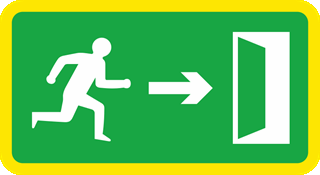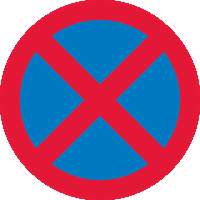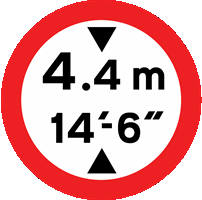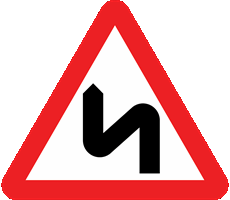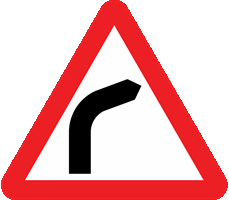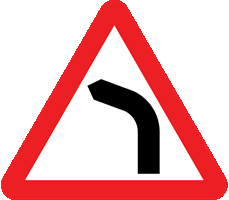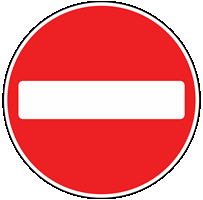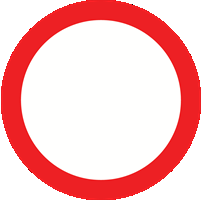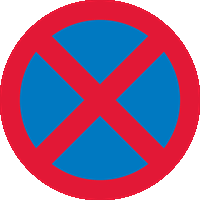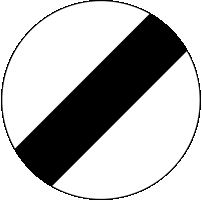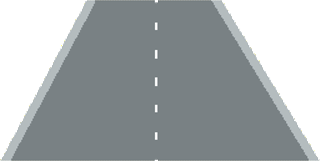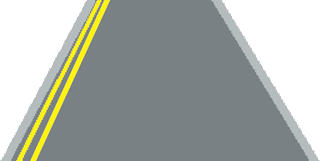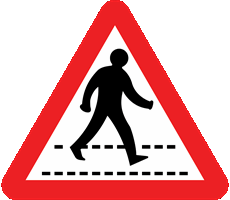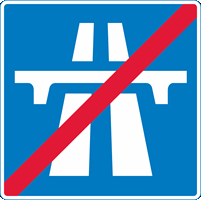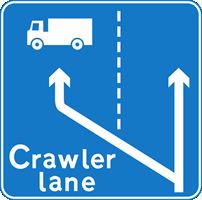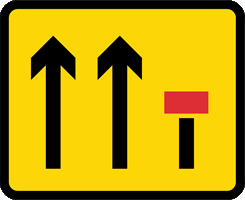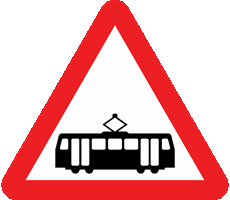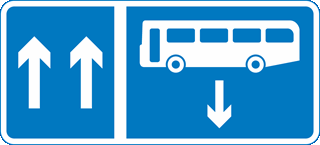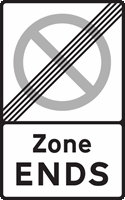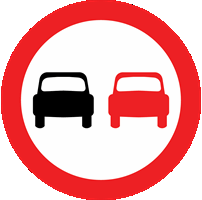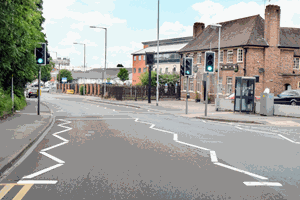Assess your road signs knowledge with this test.There are 30 questions in total. You need to score 25 to pass. You can check your answers after each question or you can review all of your answers at the end of the test. Good luck!
Test Quick View
Click on an answer to view the correct choice along with the explanation.
1. You're waiting at a T-junction. A vehicle is coming from the right, with its left indicator flashing. What should you do?
Mark one answer
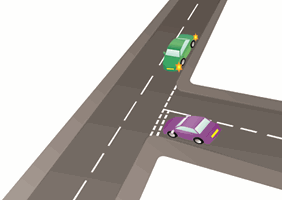
B
C
D
Correct Answer: D
Explanation: Other road users may give misleading signals. When you're waiting at a junction, don't emerge until you're sure of their intentions.
Explanation: Other road users may give misleading signals. When you're waiting at a junction, don't emerge until you're sure of their intentions.
2. You're signalling to turn right in busy traffic. How would you confirm your intention safely?
Mark one answer
B
C
D
Correct Answer: B
Explanation: In some situations, you may feel your indicators can't be seen by other road users. If you think you need to make your intention more obvious, give the arm signal shown in The Highway Code.
Explanation: In some situations, you may feel your indicators can't be seen by other road users. If you think you need to make your intention more obvious, give the arm signal shown in The Highway Code.
Correct Answer: C
Explanation: If you have to leave your vehicle and get out of a tunnel by an emergency exit, do so as quickly as you can. Follow the signs directing you to the nearest exit point. If there are several people using the exit, don't panic but try to leave in a calm and orderly manner.
Explanation: If you have to leave your vehicle and get out of a tunnel by an emergency exit, do so as quickly as you can. Follow the signs directing you to the nearest exit point. If there are several people using the exit, don't panic but try to leave in a calm and orderly manner.
4. You're driving in busy traffic. You want to pull up on the left just after a junction on the left. When should you signal?
Mark one answer
B
C
D
Correct Answer: A
Explanation: You need to signal to let other drivers know your intentions. However, if you indicate too early, they may think you're turning left into the junction. Correct timing of the signal is very important to avoid misleading others.
Explanation: You need to signal to let other drivers know your intentions. However, if you indicate too early, they may think you're turning left into the junction. Correct timing of the signal is very important to avoid misleading others.
5. You're approaching a junction where the traffic lights aren't working. What should you do when a police officer gives this signal?
Mark one answer

B
C
D
Correct Answer: B
Explanation: When a police officer or traffic warden is directing traffic, you must obey them. They'll use the arm signals shown in The Highway Code. Learn what these signals mean and obey them.
Explanation: When a police officer or traffic warden is directing traffic, you must obey them. They'll use the arm signals shown in The Highway Code. Learn what these signals mean and obey them.
Correct Answer: C
Explanation: Clearways are stretches of road where you aren't allowed to stop unless it's an emergency. Stopping where these restrictions apply may be dangerous and is likely to cause an obstruction. Restrictions might apply for several miles and this may be indicated on the sign.
Explanation: Clearways are stretches of road where you aren't allowed to stop unless it's an emergency. Stopping where these restrictions apply may be dangerous and is likely to cause an obstruction. Restrictions might apply for several miles and this may be indicated on the sign.
Correct Answer: B
Explanation: The triangular shapes above and below the dimensions indicate a height restriction that applies to the road ahead.
Explanation: The triangular shapes above and below the dimensions indicate a height restriction that applies to the road ahead.
Correct Answer: B
Explanation: Triangular signs give you a warning of hazards ahead. They're there to give you time to prepare for the hazard; for example, by adjusting your speed.
Explanation: Triangular signs give you a warning of hazards ahead. They're there to give you time to prepare for the hazard; for example, by adjusting your speed.
Correct Answer: D
Explanation: You should know the speed limit for the road on which you're travelling and the vehicle that you're driving. The different speed limits are shown in The Highway Code.
Explanation: You should know the speed limit for the road on which you're travelling and the vehicle that you're driving. The different speed limits are shown in The Highway Code.
Correct Answer: A
Explanation: You need to know the difference between the normal centre line and a hazard warning line. If there's a hazard ahead, the markings are longer and the gaps shorter. This gives you advance warning of an unspecified hazard.
Explanation: You need to know the difference between the normal centre line and a hazard warning line. If there's a hazard ahead, the markings are longer and the gaps shorter. This gives you advance warning of an unspecified hazard.
Correct Answer: A
Explanation: This road marking means you should give way to traffic on the main road. It might not be used at junctions where there isn't much traffic. However, if there's a double broken line across the junction, the 'give way' rules still apply.
Explanation: This road marking means you should give way to traffic on the main road. It might not be used at junctions where there isn't much traffic. However, if there's a double broken line across the junction, the 'give way' rules still apply.
Correct Answer: B
Explanation: At night or in poor visibility, reflective studs on the road help you to judge your position on the carriageway.
Explanation: At night or in poor visibility, reflective studs on the road help you to judge your position on the carriageway.
Correct Answer: B
Explanation: When there's queuing traffic ahead and you have to slow down or even stop, briefly showing your hazard warning lights will help alert following traffic to the hazard.
Explanation: When there's queuing traffic ahead and you have to slow down or even stop, briefly showing your hazard warning lights will help alert following traffic to the hazard.
Correct Answer: D
Explanation: Never sound the horn aggressively. You mustn't sound it when driving in a built-up area between 11.30 pm and 7.00 am, or when you're stationary, unless another road user poses a danger. Don't scare animals by sounding your horn.
Explanation: Never sound the horn aggressively. You mustn't sound it when driving in a built-up area between 11.30 pm and 7.00 am, or when you're stationary, unless another road user poses a danger. Don't scare animals by sounding your horn.

B
C
D
Correct Answer: C
Explanation: Yellow 'box junctions' like this are often used where it's busy. Their purpose is to keep the junction clear for crossing traffic. Don't enter the painted area unless your exit is clear. The one exception is when you're turning right and are only prevented from doing so by oncoming traffic or by other vehicles waiting to turn right.
Explanation: Yellow 'box junctions' like this are often used where it's busy. Their purpose is to keep the junction clear for crossing traffic. Don't enter the painted area unless your exit is clear. The one exception is when you're turning right and are only prevented from doing so by oncoming traffic or by other vehicles waiting to turn right.
Correct Answer: C
Explanation: If you're travelling on a dual carriageway that becomes a single carriageway road, reduce your speed gradually so that you aren't exceeding the limit as you enter. There might not be a sign to remind you of the limit, so make sure you know the speed limits for different types of road and vehicle.
Explanation: If you're travelling on a dual carriageway that becomes a single carriageway road, reduce your speed gradually so that you aren't exceeding the limit as you enter. There might not be a sign to remind you of the limit, so make sure you know the speed limits for different types of road and vehicle.
Correct Answer: C
Explanation: Don't attempt to overtake here, as there might be unseen hazards over the brow of the hill. Keep to the left.
Explanation: Don't attempt to overtake here, as there might be unseen hazards over the brow of the hill. Keep to the left.
Correct Answer: D
Explanation: The white light shows that trams must stop. The green light shows that other vehicles can go if the way is clear. Trams are being introduced into more cities, so you're likely to come across them and you should learn which signs apply to them.
Explanation: The white light shows that trams must stop. The green light shows that other vehicles can go if the way is clear. Trams are being introduced into more cities, so you're likely to come across them and you should learn which signs apply to them.
Correct Answer: D
Explanation: Look well ahead and be ready to stop for any pedestrians crossing, or about to cross, the road. Also check the pavements for anyone who looks like they might step or run into the road.
Explanation: Look well ahead and be ready to stop for any pedestrians crossing, or about to cross, the road. Also check the pavements for anyone who looks like they might step or run into the road.
Correct Answer: B
Explanation: When you leave the motorway, make sure that you check your speedometer. You may be going faster than you realise. Slow down and look for speed-limit signs.
Explanation: When you leave the motorway, make sure that you check your speedometer. You may be going faster than you realise. Slow down and look for speed-limit signs.
Correct Answer: B
Explanation: Where there's a long, steep, uphill gradient on a motorway, a crawler lane may be provided. This helps the traffic to flow by diverting the slower heavy vehicles into a dedicated lane on the left.
Explanation: Where there's a long, steep, uphill gradient on a motorway, a crawler lane may be provided. This helps the traffic to flow by diverting the slower heavy vehicles into a dedicated lane on the left.
Correct Answer: D
Explanation: Yellow-and-black temporary signs may be used to inform you about roadworks or lane restrictions. Look well ahead. If you have to change lanes, do so in good time.
Explanation: Yellow-and-black temporary signs may be used to inform you about roadworks or lane restrictions. Look well ahead. If you have to change lanes, do so in good time.
Correct Answer: C
Explanation: This sign tells you to beware of trams. If you don't usually drive in a town where there are trams, remember to look out for them at junctions and look for tram rails, signs and signals.
Explanation: This sign tells you to beware of trams. If you don't usually drive in a town where there are trams, remember to look out for them at junctions and look for tram rails, signs and signals.
Correct Answer: B
Explanation: There will also be markings on the road surface to indicate the bus lane. You mustn't use this lane for parking or overtaking.
Explanation: There will also be markings on the road surface to indicate the bus lane. You mustn't use this lane for parking or overtaking.
Correct Answer: C
Explanation: Even though you've left the restricted area, make sure that you park where you won't endanger other road users or cause an obstruction.
Explanation: Even though you've left the restricted area, make sure that you park where you won't endanger other road users or cause an obstruction.
Correct Answer: B
Explanation: Road signs that prohibit overtaking are placed in locations where passing the vehicle in front is dangerous. If you see this sign, don't attempt to overtake. The sign is there for a reason; you must obey it.
Explanation: Road signs that prohibit overtaking are placed in locations where passing the vehicle in front is dangerous. If you see this sign, don't attempt to overtake. The sign is there for a reason; you must obey it.
Correct Answer: C
Explanation: Whatever light is showing, you should know which light is going to appear next and be able to take appropriate action. For example, when amber is showing on its own, you'll know that red will appear next. This should give you ample time to anticipate and respond safely.
Explanation: Whatever light is showing, you should know which light is going to appear next and be able to take appropriate action. For example, when amber is showing on its own, you'll know that red will appear next. This should give you ample time to anticipate and respond safely.
Correct Answer: A
Explanation: The approach to, and exit from, a pedestrian crossing is marked with zigzag lines. You mustn't park on them or overtake the leading vehicle when approaching the crossing. Parking here would block the view for pedestrians and approaching traffic.
Explanation: The approach to, and exit from, a pedestrian crossing is marked with zigzag lines. You mustn't park on them or overtake the leading vehicle when approaching the crossing. Parking here would block the view for pedestrians and approaching traffic.
29. Other drivers may sometimes flash their headlights at you. In which situation are they allowed to do this?
Mark one answer
B
C
D
Correct Answer: D
Explanation: If other drivers flash their headlights, this isn't a signal to show priority. The flashing of headlights has the same meaning as sounding the horn: it's a warning of their presence.
Explanation: If other drivers flash their headlights, this isn't a signal to show priority. The flashing of headlights has the same meaning as sounding the horn: it's a warning of their presence.
30. A police car is following you. The police officer flashes the headlights and points to the left. What should you do?
Mark one answer
B
C
D
Correct Answer: B
Explanation: You must pull up on the left as soon as it's safe to do so and switch off your engine.
Explanation: You must pull up on the left as soon as it's safe to do so and switch off your engine.



